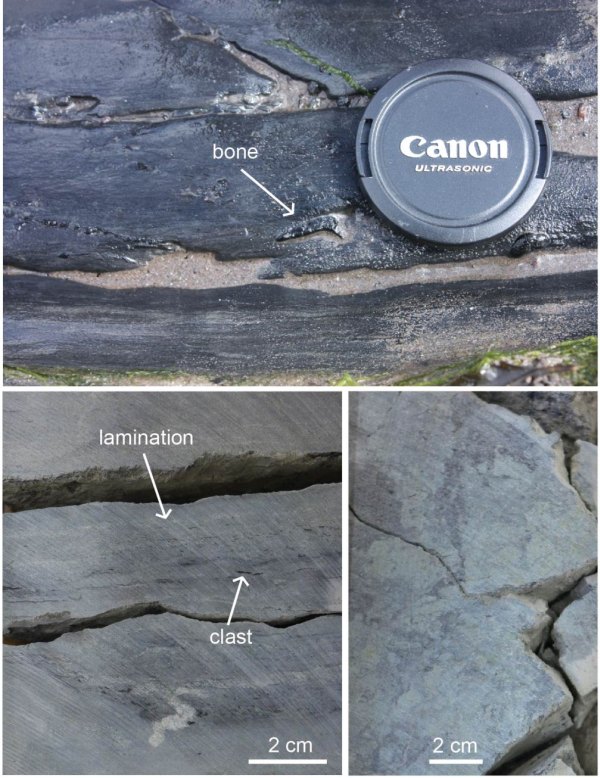Sedimentology: Early Mississippian Sandy Siltstones
Carys Bennett, Tim Kearsey, Sarah Davies, Dave Millward, Jenny Clack, Tim Smithson, John Marshall
In March 2016, the Sedimentological Framework team published their first paper, in the journal Sedimentology (you can read the abstract.) The paper describes unique deposits that contain tetrapods from Scotland. We asked the questions: Why do these particular successions preserve such abundant fossil evidence of the early terrestrial ecosystems? And what sedimentary processes were acting to concentrate and preserve tetrapod fossils? The study describes a particular type of sedimentary rock, sandy siltstones, as sites of tetrapod fossil preservation.
Sandy siltstones generated by flooding are under-recognised deposits that preserve key vertebrate, invertebrate and plant fossils, such as actinopterygian and rhizondont fishes, rarer lungfish, chondrichthyans (sharks and rays) and tetrapods.
We record for the first time from the Lower Mississippian (Tournaisian, Carboniferous) Ballagan Formation of Scotland, more than 140 beds occurring throughout a 490 metre thick succession, characterised by riverine sandstones, palaeosols, siltstones, dolostone 'cementstones' and gypsum from a coastal-alluvial plain setting.
Sandy siltstones are described as a unique taphofacies (sedimentary unit characterised by the combination of depositional features of the fossils preserved within it) of the Ballagan Formation. They are matrix-supported siltstones with millimetre-sized siltstone and very fine sandstone clasts (small pieces of sedimentary rock).

Examples of sandy siltstones
© Copyright 2016 Carys Bennett.
Common fossils include plants and megaspores, fish, ostracods, eurypterids and bivalves. The fossils have a high degree of articulation compared with those found in other fossil-bearing deposits such as conglomerate lags at the base of river channel sandstones.
Bed thickness and distribution varies throughout the formation, with no stratigraphic trend. The matrix sediment and clasts are sourced from the reworking of floodplain sediments including desiccated surfaces and palaeosols. Secondary pedogenic (soil formation) modification affects 30% of the sandy siltstone beds and most (71%) overlie palaeosols or desiccation cracks.
Sandy siltstones are interpreted to have formed by cohesive debris flows due to localised floodplain sediment transport at times of high rainfall; their association with palaeosols and desiccation cracks indicates seasonally wet to dry cycles throughout the Tournaisian.
Tetrapod and fish fossils derived from floodplain lakes and land surfaces are concentrated by local erosion and reworking and are preserved by deposition in temporary lakes on the floodplain; their distribution indicates a local origin, with sediment distributed across the floodplain in seasonal rainfall episodes.
These deposits are significant new sites that can be explored for the preservation of rare non-marine fossil material and provide unique insights into the evolution of early terrestrial ecosystems.

